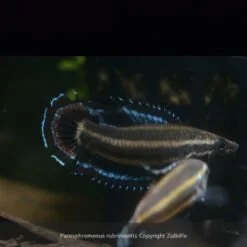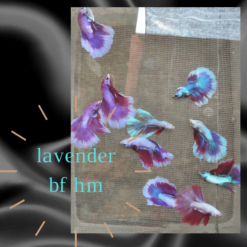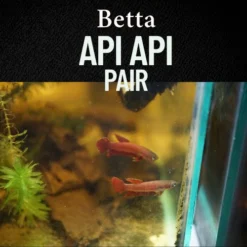Stunning Premium Show Betta Pair
RM350.00
The Ultimate Guide to Owning a Premium Show Betta Pair
The allure of a Premium Show Betta Pair is undeniable for aquarium enthusiasts. Their vibrant colors, flowing fins, and unique personalities make them a captivating addition to any aquatic setup. Whether you’re an experienced fish keeper or a novice looking to start your journey, understanding the nuances of caring for a Betta pair is crucial. This guide will walk you through everything you need to know to keep your Betta pair thriving and your aquarium a harmonious environment.
What Makes a Betta Fish “Premium”?
Before diving into the specifics of caring for a Premium Show Betta Pair, it’s essential to understand what sets these fish apart from standard Bettas. A premium Betta is typically bred for exceptional traits, such as vivid coloration, perfectly symmetrical fins, and a robust, healthy build. These Bettas are often showcased in competitions and are considered the epitome of the species.
Choosing the Right Betta Pair
Selecting a Premium Show Betta Pair isn’t just about picking the most beautiful fish. Compatibility is key. While Bettas are known for their aggressive tendencies, especially males, finding a compatible pair can lead to a peaceful and visually stunning aquarium display. When choosing your Betta pair, consider the following:
- Size and Age: Ensure that both Bettas are similar in size and age to avoid dominance issues.
- Temperament: Observe the fish’s behavior before purchasing. A calm and less aggressive Betta is ideal for pairing.
- Health: Look for signs of good health, such as clear eyes, vibrant colors, and active swimming.
Setting Up the Ideal Habitat
Creating the perfect environment for your Premium Show Betta Pair is crucial to their well-being. Bettas originate from the slow-moving waters of Thailand and Cambodia, so replicating this environment will help them feel at home. Here’s what you need to consider:
- Tank Size: A minimum of 10 gallons is recommended for a Betta pair, with plenty of space for them to establish their territories.
- Water Quality: Maintain a stable temperature between 76-82°F and a pH level of 6.5-7.5. Regular water changes are essential to keep the water clean and free of toxins.
- Decorations: Include plenty of hiding spots, such as caves and plants, to allow each Betta to retreat if necessary. Floating plants can also provide shade and reduce stress.
- Filtration: Use a gentle filter that doesn’t create strong currents, as Bettas prefer calm waters.
Feeding Your Premium Show Betta Pair
Diet plays a significant role in maintaining the vibrant colors and overall health of your Premium Show Betta Pair. Bettas are carnivorous and thrive on a protein-rich diet. Here’s how to feed them properly:
- High-Quality Pellets: Choose Betta-specific pellets that are high in protein and formulated for enhanced color and health.
- Frozen and Live Foods: Supplement their diet with frozen or live foods such as brine shrimp, daphnia, and bloodworms. This variety will keep them healthy and stimulated.
- Feeding Schedule: Feed your Bettas 2-3 times a day, only offering as much as they can consume in two minutes to prevent overfeeding and water contamination.
Understanding Betta Behavior
Owning a Premium Show Betta Pair means you’ll witness a range of behaviors unique to these fascinating fish. Understanding these behaviors is essential to ensure their well-being and address any potential issues:
- Flaring: Bettas flare their gills and fins to appear larger and more intimidating, usually during interactions with other fish. While flaring is natural, excessive flaring may indicate stress.
- Bubble Nests: Male Bettas build bubble nests as part of their breeding behavior. If you see bubbles on the water’s surface, it means your Betta is content and possibly ready to breed.
- Aggression: Even with a compatible pair, occasional aggression may occur. Monitor their interactions, and if one Betta becomes overly aggressive, consider separating them temporarily.
Breeding Premium Show Bettas
If you’re interested in breeding your Premium Show Betta Pair, it’s essential to prepare adequately. Breeding Bettas requires careful planning, a dedicated breeding tank, and attention to detail:
- Conditioning: Before breeding, condition both the male and female with a high-protein diet to ensure they are in optimal health.
- Breeding Tank Setup: Use a separate breeding tank with gentle filtration, a stable temperature of 80°F, and a calm environment. Include a flat surface or a leaf for the male to build his bubble nest.
- Introducing the Pair: Introduce the female to the breeding tank in a transparent container, allowing the male to display his courtship behavior. If the female shows vertical bars and the male builds a bubble nest, release her.
- Spawning Process: Once they spawn, the male will collect the eggs and place them in the bubble nest. After spawning, remove the female to prevent aggression and allow the male to care for the eggs.
Common Health Issues and How to Prevent Them
Betta fish, including your Premium Show Betta Pair, are prone to specific health issues. Recognizing the symptoms early and taking preventive measures can save your fish from severe complications:
- Fin Rot: Characterized by ragged and discolored fins, fin rot is caused by poor water quality and bacterial infections. Regular water changes and maintaining cleanliness can prevent this condition.
- Ich (White Spot Disease): Ich presents as tiny white spots on the Betta’s body and fins. It is a parasitic infection often caused by stress and sudden temperature changes. Treat Ich with specialized aquarium medications and gradually raising the water temperature.
- Swim Bladder Disorder: If your Betta is having trouble swimming, it may have swim bladder disorder, often due to overfeeding or constipation. Fast your Betta for 24-48 hours, then offer a small amount of a pea (with the shell removed) to help alleviate the condition.
Maintaining Harmony in a Betta Tank
To keep your Premium Show Betta Pair thriving, it’s vital to maintain harmony within the tank. This involves more than just creating the right environment and diet; it also includes ongoing care and observation:
- Regular Water Changes: Perform 25-30% water changes weekly to ensure water quality remains high. This prevents the buildup of harmful substances that can stress your fish.
- Monitoring Behavior: Keep an eye on your Bettas’ interactions. If one fish becomes overly aggressive, consider rearranging the tank decor to break up sightlines or even separating the pair if necessary.
- Health Checks: Regularly inspect your Bettas for signs of illness, such as color fading, lethargy, or unusual swimming patterns. Early detection and treatment are key to keeping your fish healthy.
Conclusion
Owning a Premium Show Betta Pair is a rewarding experience that brings the beauty and elegance of these stunning fish into your home. With proper care, attention to detail, and a commitment to maintaining their environment, your Betta pair can thrive and bring joy to your aquarium for years to come. Whether you’re showcasing them in a competition or simply enjoying their vibrant presence, your efforts in creating a harmonious and healthy habitat will be well worth it.
FAQs
Can two male Bettas be kept together?
No, two male Bettas should never be kept together as they are highly territorial and will fight, often to the death. A compatible pair usually consists of a male and a female, or in some cases, two females.
How often should I feed my Premium Show Betta Pair?
Feed your Bettas 2-3 times a day, offering only as much food as they can consume in a couple of minutes. This prevents overfeeding and helps maintain water quality.
What is the ideal tank size for a Betta pair?
A minimum of 10 gallons is recommended for a Betta pair to provide enough space for each fish to establish its territory.
Why is my Betta flaring at its reflection?
Bettas often mistake their reflection for another Betta, which triggers their natural territorial behavior, leading to flaring. You can reduce this by adjusting the tank lighting or adding more decorations to break up the reflection.
How can I tell if my Betta is stressed?
Signs of stress in Bettas include dull coloration, clamped fins, hiding frequently, and reduced appetite. Address the cause by checking water quality, ensuring the tank is properly set up, and reducing any potential stressors.
Is it normal for my Betta to build a bubble nest?
Yes, male Bettas often build bubble nests as part of their breeding behavior. It’s a sign that your Betta is content and in good health.
| Weight | 0.7 kg |
|---|---|
| Dimensions | 20 × 15 × 15 cm |
Only logged in customers who have purchased this product may leave a review.
Related products
Hybrid & Wild Betta Fish
Betta Albimarginata Pair – Sleek, Rare & Mouthbrooding Marvels for Soft-Water Aquariums
Live Fish and Invertebrate Sales
Betta Halfmoon Fish Varieties: Aquatic Elegance for Your Aquarium
Hybrid & Wild Betta Fish
Betta Api Api Pair – Exquisite Rare Wild-Type Betta for Blackwater Aquariums
Show Betta Fish
All Products
























Reviews
There are no reviews yet.